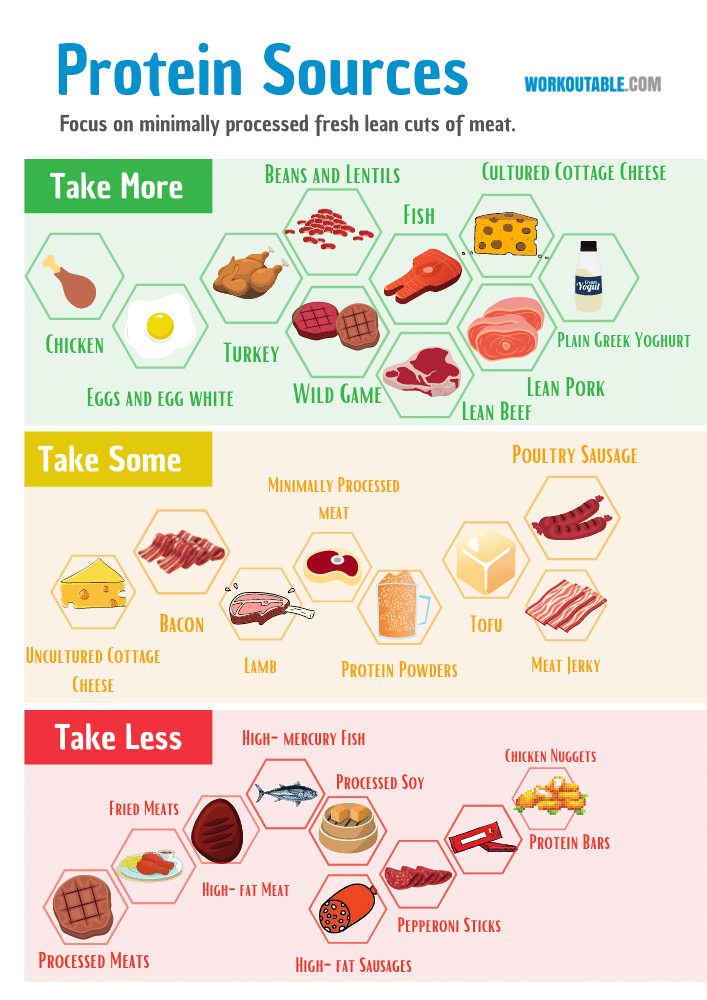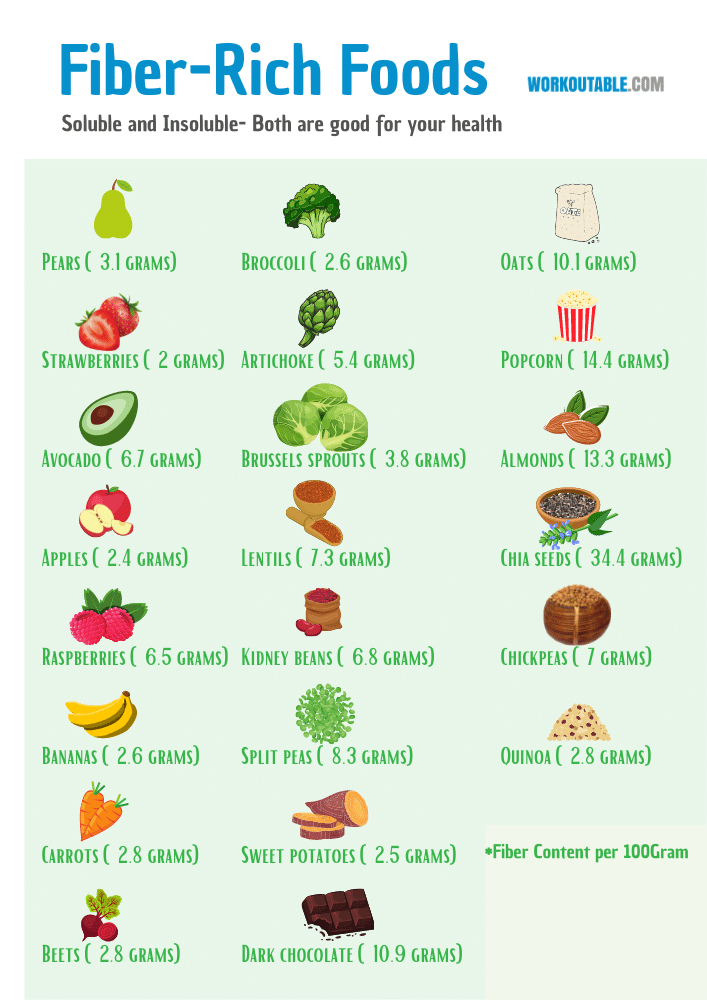Eating foods that make you feel full will help with cravings and allow you to stay in a calorie deficit state. A calorie deficit means you are taking in fewer calories than you spend each day.
When you're trying to lose weight, it can be tough to stick to small portions of food. It's hard to hold out when cravings hit and you might find yourself eating more than usual.
So you need to control your cravings in order to reduce your food portions. Let’s explore some strategies that help you feel full while eating less food.
Practical ways to feel full while eating less
If you are struggling to lose weight due to cravings, these strategies can help.
You have to apply these from today itself - just reading it doesn't make sense. No need to apply all of the strategies; you can practice one or two strategies per week and add more as they become habits.
So let's look into practical ways to feel fuller while eating less.
Increase your protein intake in each meal
Make sure that you are getting protein In each meal and try to increase its quantity to reach your daily requirements.
Protein is shown to increase your satiety and feeling of fullness than carbohydrates and fat. It also helps you to reduce your food intake thus reducing your calorie intake.
High protein intake reduces the level of the hunger hormone ghrelin.
While in a calorie deficit state a higher protein intake will help you to feel satiated and control your cravings.
When you're in a calorie deficit state, your body will signal its need for energy through hunger. Protein can help to mitigate this, as it takes longer to break down and make it easier to last without feeling hungry.
Let's make this work for you
let's look into some of the good and healthy protein sources and some tips to include them in your meals.
All protein sources are not equally good or healthy. Some need to be taken less and some need to be avoided. You have to choose from such sources that are less processed.
The below diagram can help you to choose less processed healthy options of protein foods. Try to add one or two palm-sized portions of protein foods to each meal.
Portion size:
Men needs 2 palm-sized portion and women need one palm-sized portion of protein food in each meal. You can find your daily portion needs using our hand portion and macro calculator.
Looking for ideas?
Add a hand full of nuts, beans, or hard-boiled eggs to your salad, eggs contain 6 grams of protein.
Take soluble fiber and feel fuller
Fruits, vegetables, and whole grains are good sources of fiber. Fiber helps to keep you fuller for longer. There are two different types of fiber: soluble and insoluble.
Soluble fiber absorbs water and forms a gel, which slows down the absorption of sugar into the bloodstream. It also slows the movement of digested food, and this will make you feel fuller and keep hunger away.
Fiber reduces the quantity of food intake. The study shows that an additional intake of 14gram of fiber in the diet helps to decrease the food intake and resulted in a 2 kg weight loss over four months.
Chia seeds and flax seeds are good sources of soluble fiber and they help to keep you fuller and can reduce cravings.
Here is our list of fiber-rich foods, try to add them to your meals and snacks.
Some tips to include more fiber in your diet
Start with salad or soup
Starting your meals with soup or salad will help you to reduce your calorie intake. Soups and salads have high volume and have low calories. But salad dressings can increase the calories.
When the soup was eaten before meals, the study shows a 20% reduction in calorie intake.
Taking salads before meals will help you reduce your calorie intake by around 7%, and it can go up by 20% based on whether it's a small or large portion.
Soups will keep you fuller for a longer time, as it takes more time for gastric emptying. Salads are rich in fiber and have fewer calories, this will keep you fuller for a longer time while eating less.
Want some inspiration, we have an article on macro salad recipes.
Some tips to make sure that you have your salads
Spice up your meals with hot pepper, or ginger
These spices will help you in feeling fuller after eating small meals. Capsaicin found in hot pepper helps you to feel fuller and keep hunger pangs away. Eating them in your breakfast can cause a reduced calorie intake and cravings for lunch.
Drinking ginger tea before meals helps you to reduce your hunger and food intake. Ginger also helps you to stay fuller for a longer time.
Start with smaller portions
Rather than eating a large piece of food, it is better to cut it into smaller, bite-sized portions. This helps to increase satiation as reported by a team of academics from Arizona State University at the Annual Meeting of the Society for the Study of Ingestive Behavior.
If you are having a large single-piece food item, cutting it into smaller bite-sized pieces can help you to reduce your food intake and stay fuller for longer.
Eat slowly
Your eating rate can affect your food intake. Slowing your eating rate can help you to reduce your food intake and thereby reduce your calorie intake.
Foods that were eaten slowly help you to stay fuller for longer. People who eat faster take in larger bites and consume more calories.
Eating slower affects your endocrine hormones like insulin and pancreatic polypeptide.
Thus eating slowly helps you in the weight loss journey, let's look into some of the ways to eat slowly.
Mindful eating
Eating nowadays has become a mindless and automatic act, that is controlled mostly by external factors triggering your cravings.
In mindful eating, you regain control of your eating habits. It's like meditation, your full focus will be on eating the food.
You will experience the food with all your senses. This helps you to eat less food and you will feel full.
Mindful eating helps you to reduce eating disorders like emotional eating and binge eating.
Let's practice mindfully eating with these steps,
Takeaway
Feeling full while eating less is dependent on food choices and your eating habits. You have to choose those filling foods that are rich in proteins, fiber, and fats. At the same time, you have to practice mindful and slow eating.
Just reading these is not going to help you to feel fuller, you have to take the next steps to get results. Choose one or two from the above steps and apply them from the next day. In the case of mindful and slow eating, you can practice today itself.
Once those practices become habits, you can choose the next actions from the list and practice them. It may take some time, but as you are building healthy habits, it will stay with you.
FAQ
How can I feel full without binge eating?
Binge eating is an eating disorder, in most cases, it needs treatment under the guidance of a medical practitioner. Binge eaters usually consume large amounts of food even if they are not hungry, followed by a feeling of shame or guilt.
You can try the steps we discussed above to feel fuller while eating less. Select your food choices to include more whole grains and less processed foods.
You include more protein, healthy fats, and start with a salad. Eating slowly and mindfully will help you to feel fuller and keep cravings away. Try these and share your results in the comments.
What are some ways I can eat less but feel full?
You can fill half of your plate with veggies and choose less processed foods. We have shared an infographic above (click here to go to the section) which shows foods that are less processed. Try to choose those foods, as they are rich in fiber and other nutrients and less in calories when compared to processed foods.
Protein and healthy fats will help you feel fuller, and also help reduce your food intake in subsequent meals.
Another technique is to eat slowly, which helps you to feel fuller and eat less.
How to eat less food and not be hungry?
Hunger can be delayed by your food choices. You can include salads, protein, and healthy fats in your meals. These will help you to feel fuller and reduce hunger.
You need to take foods that are less processed and we can help you find them. Check the infographics that we shared above and it shows the least processed to processed food options.
Eating slowly and mindfully will help you to keep hunger away.
Why am I eating so much and not feeling full?
Hunger is the signal from your body that you need energy. You will eat food when you are hungry. Sometimes even after eating so much, you will feel hungry after a short time.
This does not depend on calories, but on the speed at which your body process those foods.
You have to take foods that take more time to digest, like protein( eggs, meat, greek yogurt, legumes, fish) healthy fats( nuts, seeds, olive oil, coconut oil), and fiber( whole grains, veggies). These foods will help you to feel fuller for a longer time.
How do you eat fewer calories and still feel full?
Feeling full doesn't depend on calories, rather it depends on the speed at which your body process the foods.
You have to take foods that are high in volume and less in calories. Veggies, fruits, and whole grains (check our infographic on carbs food sources) are high in volume and less in calories( some exceptions are there). Their fiber content is higher, which helps you to stay fuller while having fewer calories.
How does fiber help someone feel full and eat less?
Your body can't digest fiber, but your gut bacteria can ferment it(mainly soluble fiber) and use it for energy. Fiber adds up the volume of food intake without providing calories.
Soluble fiber forms a gel in your gut and increases digestion and nutrient absorption times. It slows down the rate at which food leaves the stomach, leading to a feeling of fullness and reduced cravings.
Can you lose weight by eating less and not exercising?
Yes, you can lose weight by eating less and not exercising. You have to keep your body in a calorie deficit state if you want to lose weight.
You can do this two ways, either reduce your calorie intake or increase your calorie spending. Exercise can increase your calorie spending throughout the day. But, if your body is in a calorie deficit state, you can lose fat without exercise.


